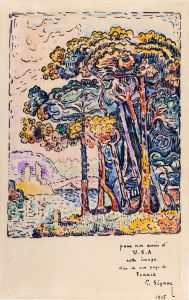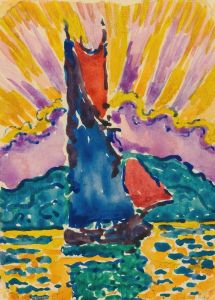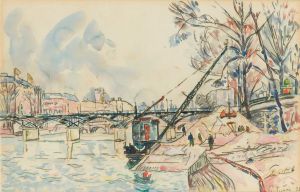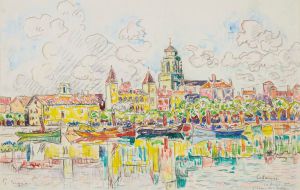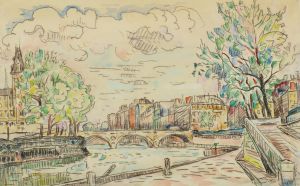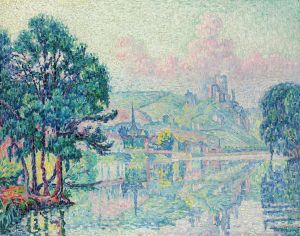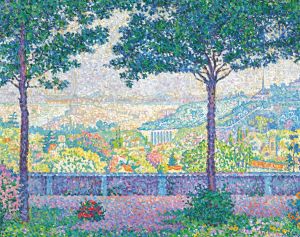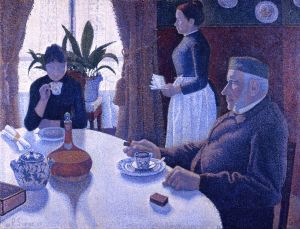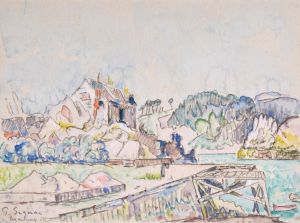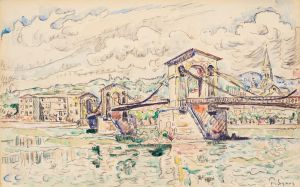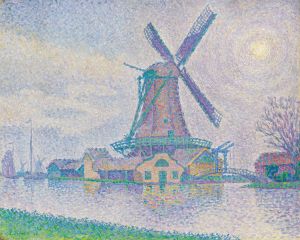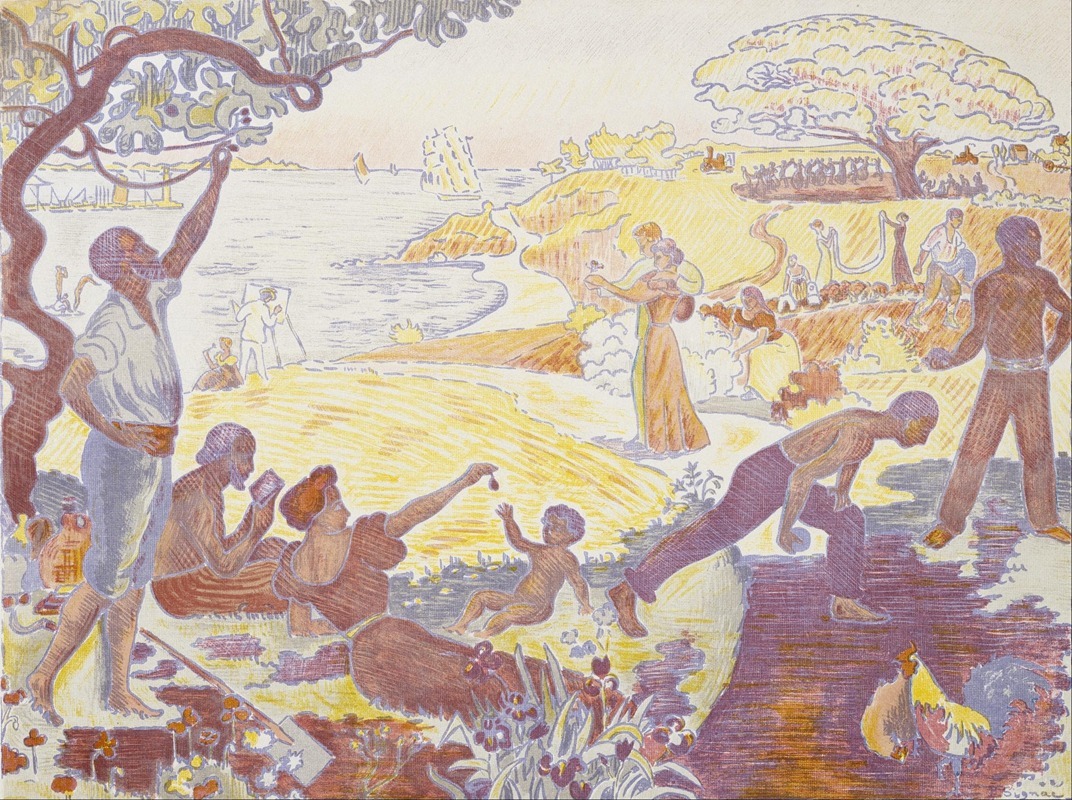
In the Time of Harmony; The Joy of Life–Sunday by the Sea
A hand-painted replica of Paul Signac’s masterpiece In the Time of Harmony; The Joy of Life–Sunday by the Sea, meticulously crafted by professional artists to capture the true essence of the original. Each piece is created with museum-quality canvas and rare mineral pigments, carefully painted by experienced artists with delicate brushstrokes and rich, layered colors to perfectly recreate the texture of the original artwork. Unlike machine-printed reproductions, this hand-painted version brings the painting to life, infused with the artist’s emotions and skill in every stroke. Whether for personal collection or home decoration, it instantly elevates the artistic atmosphere of any space.
Paul Signac's painting "In the Time of Harmony; The Joy of Life–Sunday by the Sea" is a notable work of art that exemplifies the Neo-Impressionist movement, particularly the technique known as Pointillism. Signac, a French painter, was a leading figure in this movement, which sought to advance the Impressionist approach by applying scientific theories of color and optics to painting. This painting, completed in 1895-1896, is one of Signac's most celebrated works and reflects his commitment to the ideals of harmony and leisure.
The painting depicts a vibrant and idyllic scene set by the sea, where people are engaged in various leisurely activities. The composition is filled with figures enjoying a day of relaxation and harmony, embodying the concept of "joie de vivre" or the joy of living. This theme was central to Signac's vision, as he believed art should celebrate life and its pleasures. The painting's original French title, "Au temps d'harmonie: l'âge d'or n'est pas dans le passé, il est dans l'avenir" translates to "In the Time of Harmony: The Golden Age is not in the Past, it is in the Future," suggesting an optimistic view of human progress and social harmony.
Signac's use of Pointillism is evident in the meticulous application of small, distinct dots of color, which blend in the viewer's eye to create a luminous and vibrant effect. This technique was developed alongside Georges Seurat, another key figure in Neo-Impressionism, and was based on contemporary color theories that emphasized the optical mixing of colors. The result is a painting that captures the shimmering light and vivid colors of the seaside setting, enhancing the sense of joy and tranquility.
The painting is also significant for its social and political undertones. Signac was an anarchist, and his works often reflected his ideals of a harmonious and egalitarian society. "In the Time of Harmony" can be interpreted as a vision of a utopian future where people live in peace and unity, free from the constraints of industrialization and social inequality. This vision aligns with the broader Symbolist movement of the time, which sought to convey deeper meanings and emotions through art.
"In the Time of Harmony" is housed in the Musée d'Orsay in Paris, where it continues to be admired for its technical brilliance and its optimistic portrayal of human life. The painting remains an important example of Neo-Impressionism and a testament to Signac's artistic vision and social ideals. Through its vibrant colors and harmonious composition, the painting invites viewers to reflect on the possibilities of a future where joy and harmony prevail.





